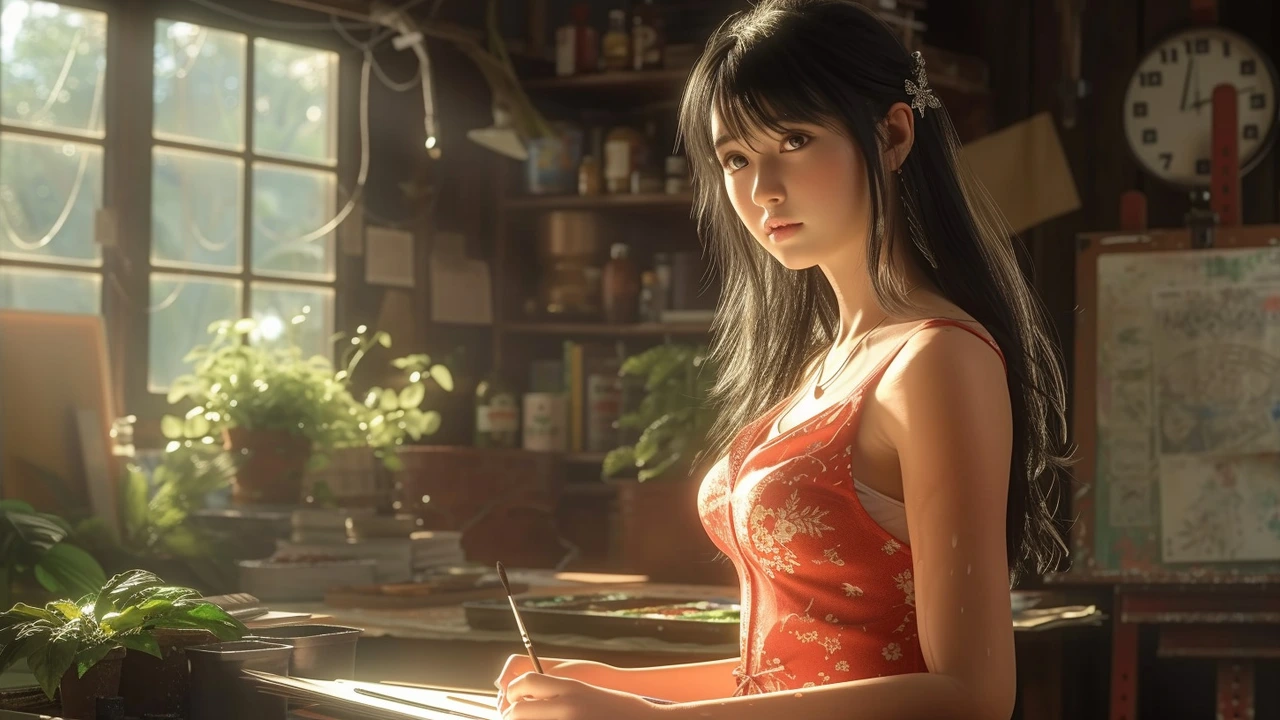Gateway to Photorealism: A Brief Introduction
As a man who has always been intrigued by the convergence of reality and creativity, Photorealism holds a particularly special place in my existence. It's the art movement in which everything looks almost, if not, completely real, jauntingly teasing the line between visual representation and physical reality. Its luminary masters craft visual facsimiles so exacting that both the mind and emotions sometimes simply refuse to accept they aren't tangible. They indeed echo the sentiment expressed by the great Pablo Picasso: "Art is the lie that enables us to realise the truth".
Peeling the Layers of Photorealism
An incredibly meticulous process laid down brick by brick, photorealistic art requires an acute detail-oriented approach and an unyielding dedication to precision. To break it down to the simplest terms, it involves the creation of artwork that appears as real as a high-resolution photograph. From the delicate interplay of light and shadow to the intricate detailing of textures and reflections, everything is faithfully captured on the canvas as in the actual photograph.
The Mastery of Light and Shadows
I remember a time when my beloved Isla and I were walking the streets of Brisbane. Isla, the keen observer that she is, wonderfully demonstrated how light creates shadows and reflections and how the interplay of light can drastically change the appearance of everyday objects. It was a simple explanation of an afternoon stroll, yet that incident profoundly impacted my understanding of photorealism. ‘Cause that's what it is at its heart, a meticulous study of the effect of light on objects leading to an art form that is as breathtakingly real as reality itself.
Photos as Inspiration
An interesting tenet of Photorealism resides in the usage of photographs as the primary reference material, hence the nomenclature. Photorealist artists rely on photos to create their work, often using techniques like projecting the photo onto the canvas to get the composition, perspective, and proportion spot on. But as any connoisseur will tell you, it's far, far more than just copying a photograph. An alluring amalgamation of the artist's interpretation, meticulous details, and deft technique makes photorealism a study in patience and precision.
Chronicles of the Photorealism Movement
Cast your mind back to the late 60s to early 70s, that's when Photorealism had its first major onrush. In the age of pop art and impressionism, Photorealism carved a unique niche, sparking intrigue and heated discussion in the creative circles. Let's take a moment to appreciate the audacious pioneers of this movement like Richard Estes, Chuck Close, and Roberto Bernardi, who dared to see beyond the traditional, who dared to tread this uncharted territory.
Modern Photorealism
Fast forward to the current era and the Photorealism movement is alive and kicking with a slew of passionate artists and enthusiastic enthusiasts. My wife Isla, for instance, can sit for hours, marvelling the brilliance of artists who command this style. Our shared passion for photorealism often leads to lively after-dinner debates and philosophical discussions on art and life.
Photorealism: Beyond the Canvas
While Photorealism primarily finds its stride in painting, it has also found remarkable application in other disciplines. Digital art, for instance, is one of the pillars where Photorealism firmly stands its ground. With powerful software and tools, artists can now create digital paintings that look exactly like a high-resolution photograph, widening the scope of Photorealism exponentially and shifting the boundaries of what’s possible.
3D Software and Photorealism
Imagine sculpting an object with such intricate details that it ceases to be a digital construct and becomes indistinguishable from an actual physical entity. That's what 3D software equipped with photorealistic rendering capabilities can accomplish. They create breathtakingly realistic visualisations so convincing that you can almost reach out and touch them. Architectural visualisations, for instance, now provide an immersive experience of the proposed structures, with minutia as precise as the reflection on a window or the texture of a brick, before their physical manifestation.
Filoos (The Takeaway)
In the end, Photorealism is all about engaging with reality on a deeper level. Whether it’s a mesmerizing painting or a compelling digital rendering, the allure of photorealism rests in its capacity to imitate life in its rawest form, compelling us to introspect, to question our perceptions of reality and art. Encased in its acute details and convincing aesthetic is a gamut of emotions, subjective interpretations, and thought-provoking themes that challenge our preconceived notions and draw us into the realm of the hyper-real. So grab your paints or your pen tablets - let’s delve deep into this fascinating world, one brushstroke or pixel at a time.




